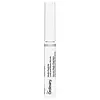What's inside
What's inside
 Key Ingredients
Key Ingredients

 Benefits
Benefits

 Concerns
Concerns

No concerns
 Ingredients Side-by-side
Ingredients Side-by-side

Water
Skin ConditioningSodium Acrylates Copolymer
Glycerin
HumectantTetrahexyldecyl Ascorbate
AntioxidantLecithin
EmollientDipotassium Glycyrrhizate
Humectant1,2-Hexanediol
Skin ConditioningCaprylyl Glycol
EmollientSodium Hyaluronate
HumectantPanthenol
Skin ConditioningTocopheryl Acetate
AntioxidantBiotin
AntiseborrhoeicDisodium EDTA
Myristoyl Pentapeptide-17
Skin ConditioningPentylene Glycol
Skin ConditioningIsochrysis Galbana Extract
Skin ConditioningEuphrasia Officinalis Extract
AntimicrobialPolylysine
Water, Sodium Acrylates Copolymer, Glycerin, Tetrahexyldecyl Ascorbate, Lecithin, Dipotassium Glycyrrhizate, 1,2-Hexanediol, Caprylyl Glycol, Sodium Hyaluronate, Panthenol, Tocopheryl Acetate, Biotin, Disodium EDTA, Myristoyl Pentapeptide-17, Pentylene Glycol, Isochrysis Galbana Extract, Euphrasia Officinalis Extract, Polylysine
Water
Skin ConditioningGlycerin
HumectantButylene Glycol
HumectantMyristoyl Pentapeptide-17
Skin ConditioningBiotinoyl Tripeptide-1
Oligopeptide-2
Skin ConditioningAcetyl Tetrapeptide-3
Skin ProtectingCaffeine
Skin ConditioningPanthenol
Skin ConditioningArginine
MaskingGlycine
BufferingGlycoproteins
Skin ConditioningLarix Europaea Wood Extract
HumectantTrifolium Pratense Flower Extract
AstringentCamellia Sinensis Leaf Extract
AntimicrobialDextran
Maltodextrin
AbsorbentZinc Chloride
AntimicrobialHydroxyethylcellulose
Emulsion StabilisingXanthan Gum
EmulsifyingTrisodium Ethylenediamine Disuccinate
Polysorbate 20
EmulsifyingSodium Metabisulfite
AntioxidantCaprylyl Glycol
Emollient1,2-Hexanediol
Skin ConditioningSodium Benzoate
MaskingBenzoic Acid
MaskingEthylhexylglycerin
Skin ConditioningPhenoxyethanol
PreservativeChlorphenesin
AntimicrobialWater, Glycerin, Butylene Glycol, Myristoyl Pentapeptide-17, Biotinoyl Tripeptide-1, Oligopeptide-2, Acetyl Tetrapeptide-3, Caffeine, Panthenol, Arginine, Glycine, Glycoproteins, Larix Europaea Wood Extract, Trifolium Pratense Flower Extract, Camellia Sinensis Leaf Extract, Dextran, Maltodextrin, Zinc Chloride, Hydroxyethylcellulose, Xanthan Gum, Trisodium Ethylenediamine Disuccinate, Polysorbate 20, Sodium Metabisulfite, Caprylyl Glycol, 1,2-Hexanediol, Sodium Benzoate, Benzoic Acid, Ethylhexylglycerin, Phenoxyethanol, Chlorphenesin
 Reviews
Reviews

Ingredients Explained
These ingredients are found in both products.
Ingredients higher up in an ingredient list are typically present in a larger amount.
1,2-Hexanediol is a synthetic liquid and another multi-functional powerhouse.
It is a:
- Humectant, drawing moisture into the skin
- Emollient, helping to soften skin
- Solvent, dispersing and stabilizing formulas
- Preservative booster, enhancing the antimicrobial activity of other preservatives
Caprylyl Glycol is a humectant and emollient, meaning it attracts and preserves moisture.
It is a common ingredient in many products, especially those designed to hydrate skin. The primary benefits are retaining moisture, skin softening, and promoting a healthy skin barrier.
Though Caprylyl Glycol is an alcohol derived from fatty acids, it is not the kind that can dry out skin.
This ingredient is also used as a preservative to extend the life of products. It has slight antimicrobial properties.
Learn more about Caprylyl GlycolGlycerin is already naturally found in your skin. It helps moisturize and protect your skin.
A study from 2016 found glycerin to be more effective as a humectant than AHAs and hyaluronic acid.
As a humectant, it helps the skin stay hydrated by pulling moisture to your skin. The low molecular weight of glycerin allows it to pull moisture into the deeper layers of your skin.
Hydrated skin improves your skin barrier; Your skin barrier helps protect against irritants and bacteria.
Glycerin has also been found to have antimicrobial and antiviral properties. Due to these properties, glycerin is often used in wound and burn treatments.
In cosmetics, glycerin is usually derived from plants such as soybean or palm. However, it can also be sourced from animals, such as tallow or animal fat.
This ingredient is organic, colorless, odorless, and non-toxic.
Glycerin is the name for this ingredient in American English. British English uses Glycerol/Glycerine.
Learn more about GlycerinMyristoyl Pentapeptide-17 isn't fungal acne safe and is a peptide.
Panthenol is a common ingredient that helps hydrate and soothe the skin. It is found naturally in our skin and hair.
There are two forms of panthenol: D and L.
D-panthenol is also known as dexpanthenol. Most cosmetics use dexpanthenol or a mixture of D and L-panthenol.
Panthenol is famous due to its ability to go deeper into the skin's layers. Using this ingredient has numerous pros (and no cons):
Like hyaluronic acid, panthenol is a humectant. Humectants are able to bind and hold large amounts of water to keep skin hydrated.
This ingredient works well for wound healing. It works by increasing tissue in the wound and helps close open wounds.
Once oxidized, panthenol converts to pantothenic acid. Panthothenic acid is found in all living cells.
This ingredient is also referred to as pro-vitamin B5.
Learn more about PanthenolWater. It's the most common cosmetic ingredient of all. You'll usually see it at the top of ingredient lists, meaning that it makes up the largest part of the product.
So why is it so popular? Water most often acts as a solvent - this means that it helps dissolve other ingredients into the formulation.
You'll also recognize water as that liquid we all need to stay alive. If you see this, drink a glass of water. Stay hydrated!
Learn more about Water